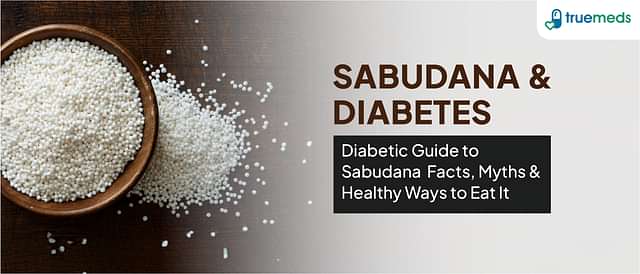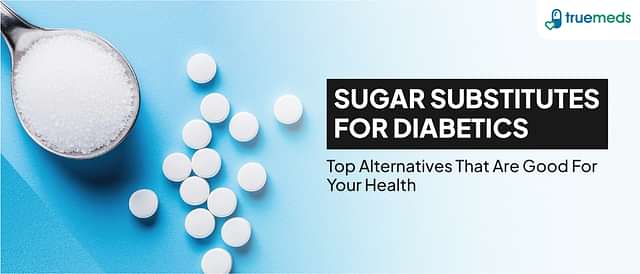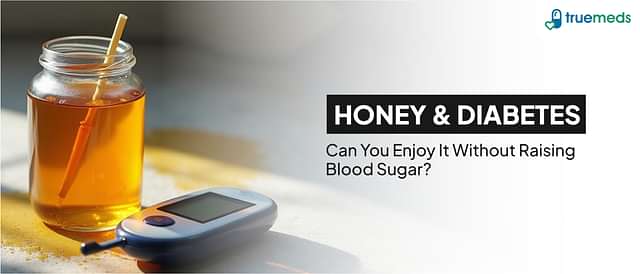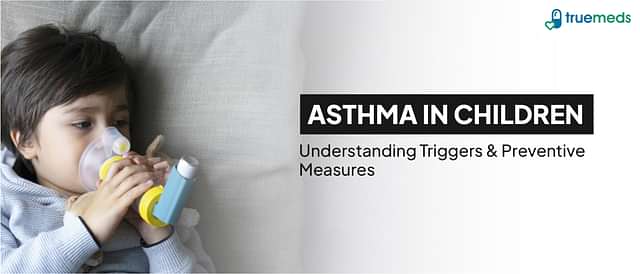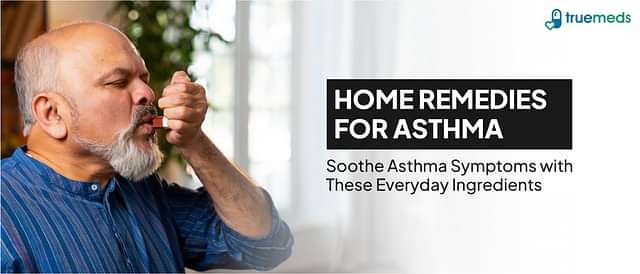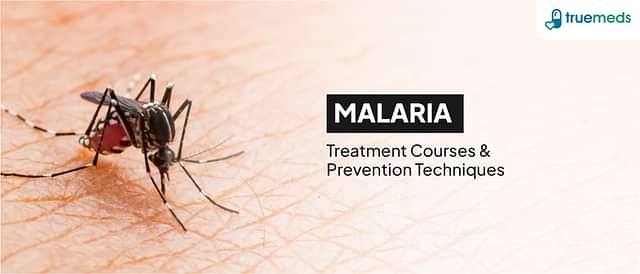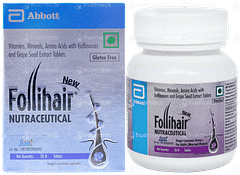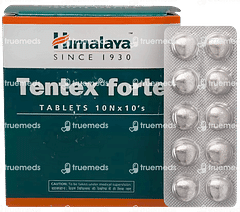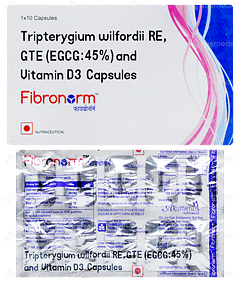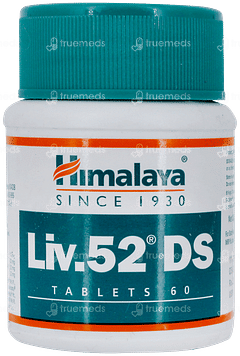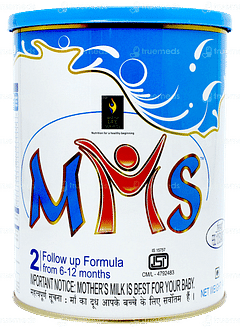Cardiac Arrest
Cardiac arrest is a life-threatening condition that occurs when the heart suddenly stops beating, causing a loss of blood flow to the brain and other vital organs. It is typically caused by an electrical malfunction in the heart and requires immediate medical attention to prevent sudden cardiac death. Recognising the symptoms of cardiac arrest and providing prompt treatment can significantly improve the chances of survival.
Last updated on : 29 Nov, 2024
Read time : 16 mins
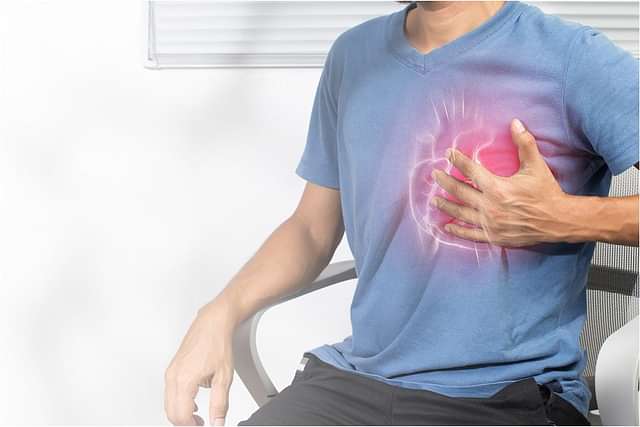
Overview of Disease
A cardiac arrest is a medical emergency that requires swift action to save a person's life. It is essential to understand the causes, risk factors, and symptoms of cardiac arrest to ensure timely intervention and improve the chances of a successful outcome. In this article, we will delve into the details of cardiac arrest, its types, and the importance of recognising the signs and seeking immediate medical help.
What is Cardiac Arrest?
A cardiac arrest is a condition in which the heart abruptly stops functioning, leading to a loss of blood circulation throughout the body. This sudden cessation of heart function is typically caused by an electrical disturbance in the heart, which disrupts its normal rhythm and prevents it from pumping blood effectively. Cardiac arrest is different from a heart attack, although a heart attack can sometimes lead to cardiac arrest. It is crucial to note that cardiac arrest is a life-threatening emergency that requires immediate medical attention to prevent permanent damage to the brain and other vital organs.
Key Factors about Cardiac Arrest
| Category | Details |
| Also Referred as | Cardiopulmonary arrest, circulatory arrest, sudden cardiac arrest (SCA) |
| Commonly Occurs In | Adults, especially those with cardiac disease, can occur in any age group |
| Affected Organ | Heart, brain, and other vital organs due to lack of blood flow |
| Type | Cardiac arrest, Sudden cardiac arrest, Sudden cardiac death, Aborted sudden cardiac death |
| Common Signs | Sudden collapse, no pulse, no breathing, loss of consciousness |
| Consulting Specialist | Cardiologist |
| Treatement Procedures | Cardiopulmonary resuscitation (CPR), defibrillation using an automated external defibrillator (AED), cardioversion, cardiac pacing |
| Managed By | Beta-blockers (e.g., metoprolol), ACE inhibitors (e.g., lisinopril), and antiarrhythmic medicines (e.g., amiodarone), surgical options (implantable cardioverter-defibrillator (ICD) placement or coronary angioplasty and stenting) |
| Mimiciking Condition | Syncope, Seizure, Overdose of certain medications like opioids |
Types of Cardiac Arrest
Cardiac arrest can be classified into several types based on the underlying cause and the outcome of the event. The main types of cardiac arrest include:
Cardiac arrest: This is the general term used to describe the sudden loss of heart function, which can be caused by various factors, including heart rhythm disturbances, coronary artery disease, and structural heart problems.
Sudden cardiac arrest: Sudden cardiac arrest (SCA) is a specific type of cardiac arrest that occurs abruptly and without warning. It is often caused by a malfunction in the heart's electrical system, leading to an irregular heartbeat (arrhythmia) that disrupts blood flow to the brain and other vital organs.
Sudden cardiac death: Sudden cardiac death (SCD) refers to the fatal outcome of cardiac arrest, which occurs when the person does not receive prompt medical treatment or when resuscitation efforts are unsuccessful.
Aborted sudden cardiac death: Aborted sudden cardiac death (ASCD) is a term used to describe a non-fatal outcome of cardiac arrest, where the person survives the event due to timely medical intervention and successful resuscitation efforts.
Symptoms of Cardiac Arrest
Cardiac arrest occurs suddenly and can be life-threatening, often without warning. The most common symptoms include:
Loss of consciousness: The individual typically becomes unresponsive and may suddenly collapse as blood flow to the brain is disrupted. This immediate loss of consciousness indicates a critical lack of oxygenated blood reaching the brain.
Absence of pulse: There is a lack of detectable pulse, indicating that the heart is no longer pumping blood effectively. Without a pulse, vital organs are deprived of oxygen, leading to rapid deterioration.
No breathing: Breathing may stop, or the person may exhibit only gasping breaths, known as agonal breathing. This irregular breathing pattern is insufficient to sustain life and requires immediate medical attention.
Chest pain: Some individuals may experience severe chest discomfort or pain before losing consciousness, though this symptom is not always present. Chest pain can indicate a heart problem and may precede a cardiac event.
Weakness or dizziness: Before the event, a person might feel lightheaded, weak, or dizzy, signalling potential heart issues. These symptoms can serve as warning signs that the heart is not functioning properly.
Rapid heartbeat: A sudden increase in heart rate may occur before cardiac arrest, indicating underlying arrhythmias. This rapid heartbeat can be alarming and may precede a life-threatening situation.
Causes of Cardiac Arrest
A cardiac arrest occurs when an electrical malfunction in the heart disrupts its rhythm, causing it to stop beating effectively. Various factors contribute to this critical condition, including:
Ventricular fibrillation: Ventricular fibrillation is the most common cause of cardiac arrest, characterised by rapid, erratic electrical signals that cause the heart's lower chambers (ventricles) to quiver. This results in ineffective pumping of blood, leading to a rapid loss of consciousness and vital signs.
Ventricular tachycardia: Ventricular tachycardia refers to a very fast heart rate originating in the ventricles. This condition can prevent the heart from filling adequately with blood, ultimately leading to a decrease in cardiac output and potential cardiac arrest.
Coronary artery disease: Coronary artery disease occurs when blockages in the coronary arteries reduce blood flow to the heart muscle. This lack of blood supply can cause damage to the heart tissue and lead to arrhythmias, increasing the risk of cardiac arrest.
Cardiomyopathy: Cardiomyopathy is a condition characterised by an enlarged or thickened heart muscle. This can interfere with the heart's ability to pump blood effectively and disrupt its electrical signals, contributing to the risk of sudden cardiac arrest.
Heart valve disease: Heart valve disease involves stretching or thickening of the heart valves, which can impede normal blood flow. Dysfunctional valves may lead to heart strain and arrhythmias, both of which can precipitate cardiac arrest.
Congenital heart defects: Congenital heart defects are structural issues present at birth that can affect heart function. These defects may disrupt normal blood flow and electrical signalling, increasing the likelihood of cardiac arrest later in life.
Long QT syndrome: This is a genetic condition that affects the heart's electrical system, leading to potentially dangerous arrhythmias.
Blood vessel abnormalities: Abnormalities in the blood vessels can impede blood flow to the heart or disrupt normal heart rhythms. Conditions such as aneurysms or vascular malformations may increase the risk of cardiac arrest.
Commotio cordis: Commotio cordis occurs when a sudden blow to the chest happens at a specific point in the heart's rhythm. This can trigger fatal arrhythmia, resulting in cardiac arrest, particularly in young athletes.
Risk Factors
Several factors can increase an individual's risk of experiencing cardiac arrest, including:
Family history of cardiac arrest or heart disease
Pre-existing heart conditions
Elevated blood pressure
High levels of cholesterol in the blood
Being overweight or obese
Presence of diabetes
Lack of physical activity
Use of tobacco
Older age and being male
History of heart attack
Low levels of potassium or magnesium
Presence of obstructive sleep apnea
Recognising these risk factors can help individuals take proactive measures to reduce their likelihood of experiencing cardiac arrest.
Complications
A cardiac arrest is a life-threatening emergency that can lead to severe complications if not treated immediately. Some of the potential complications include:
Brain injury: Brain injury due to oxygen deprivation is one of the most severe consequences of cardiac arrest. Survivors may experience a range of cognitive impairments, including memory problems, difficulty with speech and movement, and changes in behaviour or personality.
Organ damage: During cardiac arrest, vital organs such as the kidneys and liver can be deprived of oxygenated blood, leading to potential organ damage. This deprivation can result in organ failure and contribute to long-term health issues affecting overall body function.
Psychological challenges: Survivors of cardiac arrest may face psychological challenges, including anxiety, depression, and post-traumatic stress disorder (PTSD). These emotional responses can arise as individuals cope with the traumatic experience and adapt to any physical limitations resulting from the event.
Prevention of Cardiac Arrest
Preventing cardiac arrest involves managing and reducing risk factors associated with heart disease and abnormal heart rhythms. Some of the strategies include:
Healthy diet: Adopting a nutrient-rich diet high in vegetables, fruits, whole grains, low-fat dairy products, and lean proteins is essential. This dietary approach helps maintain healthy blood pressure, cholesterol levels, and weight, thereby reducing the risk of cardiac arrest.
Quitting smoking: Quitting smoking is vital, as it is a significant risk factor for heart disease and cardiac arrest. Eliminating tobacco use can lead to improved cardiovascular health and lower the likelihood of heart-related emergencies.
Regular physical activity: Engaging in at least 150 minutes of moderate-intensity physical activity each week is important for lowering blood pressure and cholesterol. Regular exercise also helps maintain a healthy weight, further decreasing the risk of cardiac arrest.
Blood pressure management: Keeping blood pressure below 120/80 mm Hg through lifestyle changes and medications can significantly reduce the risk of cardiac events. Regular monitoring and proactive management are crucial for maintaining optimal heart health.
Cholesterol control: Controlling high cholesterol levels through dietary adjustments and, if necessary, medications is essential. Lowering cholesterol can help prevent plaque buildup in arteries, reducing the risk of cardiac arrest.
Diabetes management: For individuals with diabetes, regular medical checkups and effective management of the condition are critical. Healthy eating, weight control, and physical activity play a vital role in reducing complications associated with diabetes and cardiovascular health.
Genetic screening: Genetic screening can help identify individuals at risk, particularly those with a family history of abnormal heart rhythms or sudden cardiac arrest. Early identification allows for targeted prevention strategies and monitoring.
Limiting alcohol consumption: Limiting alcohol intake is important for maintaining heart health. Excessive alcohol consumption can contribute to high blood pressure and other heart-related issues.
Stress management: Finding healthy ways to manage stress, such as through exercise, social support, and relaxation techniques, can help reduce the risk of heart problems. Effective stress management is vital for overall cardiovascular well-being.
Diagnosis & Tests
Diagnosing the underlying causes of cardiac arrest often involves a combination of clinical evaluation, medical history, and various tests. Some key diagnostic approaches include:
Electrocardiogram (ECG): An ECG is used to detect abnormal heart rhythms and electrical signals in the heart, with certain patterns like early repolarisation or ventricular fibrillation indicating a risk for sudden cardiac arrest.
Echocardiogram: It is used to assess the structure and function of the heart, including the size and thickness of the heart walls, the performance of the heart valves, and the heart's pumping ability.
Cardiac Magnetic Resonance Imaging: This is used to provide detailed images of the heart's structure and function, helping to identify scarring, inflammation, or other abnormalities that may contribute to cardiac arrest risk.
Coronary angiography: This is used to visualise the blood vessels supplying the heart, identifying blockages or narrowing of the arteries that can lead to a heart attack or cardiac arrest.
Electrophysiology: This is used to assess the heart's electrical activity and identify abnormal heart rhythms that may increase the risk of cardiac arrest.
Blood tests: These are used to check for markers of heart damage, electrolyte imbalances, or other underlying conditions that may contribute to cardiac arrest risk.
These diagnostic tests help doctors identify the specific factors contributing to an individual's risk of cardiac arrest, allowing for targeted treatment and management strategies.
Treatment & Management
Treatment and management of cardiac arrest involve both immediate interventions to restore heart function and long-term strategies to prevent future occurrences. These include:
Cardiopulmonary resuscitation (CPR): CPR is crucial for maintaining blood flow to vital organs until advanced medical care arrives. This involves chest compressions and rescue breathing to ensure that oxygenated blood continues circulating throughout the body.
Defibrillation: Defibrillation delivers an electrical shock to the heart to stop an abnormal rhythm and allow the heart to restart with a normal rhythm. This can be done using an automated external defibrillator (AED) or a manual defibrillator.
Advanced cardiac life support (ACLS): ACLS is provided by medical professionals and includes airway management, intravenous medications, and ongoing monitoring and treatment. This comprehensive approach helps stabilise the patient’s condition after cardiac arrest.
Targeted temperature management (therapeutic hypothermia): This strategy lowers the body's temperature to reduce the risk of brain damage following cardiac arrest. By improving survival rates and neurological recovery, targeted temperature management is an essential post-arrest intervention.
Coronary angioplasty and stenting: These procedures are used to open blocked coronary arteries and restore blood flow to the heart. By reducing the risk of future cardiac events, they play a critical role in the long-term management of heart health.
Implantable cardioverter-defibrillator (ICD) placement: ICDs are devices that monitor heart rhythm and deliver an electrical shock if a life-threatening arrhythmia occurs. This preventative measure is vital for high-risk individuals to avert sudden cardiac arrest.
Medications: Medications such as beta-blockers, ACE inhibitors, and antiarrhythmic medicines are used to manage underlying heart conditions and control heart rhythm. These medications also help reduce the risk of future cardiac events.
Cardiac rehabilitation programs: These programs assist patients in recovering from cardiac arrest and improving their overall heart health. Through supervised exercise, education, and lifestyle modifications, cardiac rehabilitation enhances long-term outcomes.
Living with Disease
Surviving a cardiac arrest can be a life-altering experience, with various neurological, physical, and psychological consequences that require ongoing management and support. Here are some points to consider:
Regular follow-up appointments with doctors are essential for monitoring heart health and managing any underlying conditions.
Taking prescribed medications consistently is crucial for preventing future cardiac events and managing heart conditions.
Adopting a heart-healthy lifestyle, including a balanced diet, regular exercise, and avoiding smoking, can significantly improve overall health.
Engaging with support groups or counselling can help individuals cope with the emotional aftermath of cardiac arrest and build resilience.
Having an action plan in case of another cardiac event, including knowledge of CPR and access to an automated external defibrillator (AED), can be life-saving.
Participating in structured rehabilitation programs can aid recovery, improve fitness, and provide education on heart health.
Being aware of any new or worsening symptoms, such as chest pain or shortness of breath, is vital for timely medical intervention.
Incorporating stress-reducing practices, such as mindfulness or relaxation techniques, can benefit both mental and physical health.
When to See a Doctor?
If patients notice any new or worsening symptoms, such as chest pain, shortness of breath, dizziness, or fainting, they should contact their doctor immediately.
Attend all scheduled check-ups with your doctor to monitor your heart health, adjust medications if needed, and address any ongoing symptoms or complications related to the cardiac arrest.
Key Takeaways
Cardiac arrest is a sudden loss of heart function, breathing, and consciousness, often caused by an electrical disturbance in the heart.
Common signs and symptoms of cardiac arrest include sudden collapse, no pulse, no breathing, and loss of consciousness.
Risk factors for cardiac arrest include coronary artery disease, heart valve disease, cardiomyopathy, electrical problems in the heart, and certain medications.
Bystander CPR and the use of automated external defibrillators (AEDs) can significantly improve survival rates for individuals experiencing cardiac arrest outside of a hospital setting.
Rapid medical intervention is crucial for treating cardiac arrest and preventing brain damage or death due to lack of oxygen.
Cardiac arrest survivors face a challenging recovery process involving ongoing medical care, lifestyle changes, and managing the physical and emotional consequences of the event.
Regular follow-up with doctors and prompt attention to any new or worsening symptoms are essential for preventing future cardiac arrests and maintaining overall health and well-being.
FAQs
Can a person survive a cardiac arrest?
Survival rates for cardiac arrest, especially out-of-hospital incidents, are generally low at 5-10%. However, prompt cardiopulmonary resuscitation (CPR) and defibrillation can improve the chances of survival.
What is the main cause of cardiac arrest?
Cardiac arrest is mainly caused by electrical issues that disrupt the heart's normal rhythm, causing it to stop pumping. This can stem from various underlying cardiovascular conditions like heart disease, high blood pressure, and diabetes.
What is the best treatment for cardiac arrest?
The most effective treatment for cardiac arrest is immediate cardiopulmonary resuscitation (CPR) and, if available, the use of an automated external defibrillator (AED) or manual defibrillation to restore normal heart rhythm.
Can a healthy person have cardiac arrest?
While less common, cardiac arrest can occur in healthy individuals due to sudden electrical disturbances, acute myocardial infarction, or other unexpected medical conditions.
How to avoid cardiac arrest?
Maintaining a healthy lifestyle, managing chronic conditions, avoiding smoking and excessive alcohol consumption, regular check-ups, and addressing known heart conditions can help prevent cardiac arrest.
Can you recover after cardiac arrest?
Recovery after cardiac arrest is possible but depends on factors such as the promptness and quality of cardiopulmonary resuscitation (CPR), the cause of the arrest, and post-resuscitation care.
Can ECG detect cardiac arrest?
An electrocardiogram (ECG) cannot directly detect cardiac arrest but can identify abnormal heart rhythms and other conditions that may lead to or indicate cardiac arrest.
Who is at risk for cardiac arrest?
People with pre-existing heart conditions, a family history of heart disease, and those with risk factors like hypertension, diabetes, and high cholesterol are at higher risk for cardiac arrest.
Are there warning signs before cardiac arrest?
Warning signs of cardiac arrest may include chest pain, shortness of breath, dizziness, and palpitations. However, sudden cardiac arrest often occurs without prior symptoms.
What is the minimum age for cardiac arrest?
Cardiac arrest can occur at any age, including in infants and children, although it is more common in adults, particularly those over 60 years old.
References
American Heart Association. (n.d.). What is cardiac arrest? https://www.heart.org/en/health-topics/cardiac-arrest/about-cardiac-arrest
Centers for Disease Control and Prevention. (2022, January 18). Cardiac arrest. https://www.cdc.gov/heart-disease/about/cardiac-arrest.html
Johns Hopkins Medicine. (n.d.). Cardiac arrest. https://www.hopkinsmedicine.org/health/conditions-and-diseases/cardiac-arrest
MedlinePlus. (2016, June 6). Cardiac arrest. https://medlineplus.gov/cardiacarrest.html
National Heart, Lung, and Blood Institute. (n.d.). Cardiac arrest. https://www.nhlbi.nih.gov/health/cardiac-arrest
Check Related Salts
Browse Other Conditions
Latest health articles
Top Health Essentials
Disclaimer
Top-Selling Medicines:
...View more
Top-OTC medicines:
...View more
Subscribe
Registered Office Address
Grievance Officer
Download Truemeds

Contact Us
Our customer representative team is available 7 days a week from 9 am - 9 pm.
v3.7.5
Our Payment Partners












